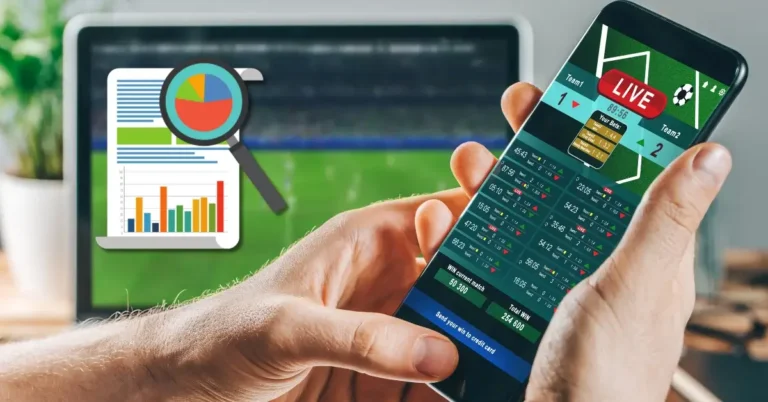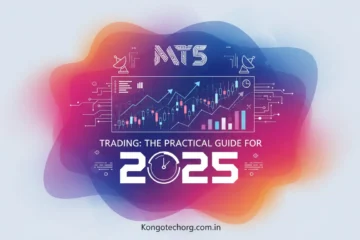Using the right statistics apps alongside 1xBet turns guesswork into informed decisions. This guide compares leading tools, explains the metrics that actually matter (like expected goals), and gives you a simple, repeatable workflow from pre-match prep to in-play checks—plus safety and legality reminders. Everything here is written for people first: no fluff, no keyword stuffing, just what helps you decide better.
Who is this for?
- Bettors who use (or are considering) 1xBet and want independent, third-party stats to cross-check markets.
- Fantasy players and data-curious fans who want xG, shot maps, and heat maps without learning a programming language.
- Analysts and writers who need a fast, reliable match-day dashboard.
Important: Online gambling is restricted or illegal in some countries. Always check local laws and use only licensed operators in your region. Nothing here is financial or legal advice.
Why the right stats app matters (and what “xG” is)
Raw scorelines tell you who won; process metrics tell you why. Among them, expected goals (xG) is the workhorse. It estimates the probability that a shot becomes a goal using historical features like shot location, angle, body part, pass type, and defensive pressure. Over a decent sample, xG is usually more stable than finishing luck, which is why it’s so useful for:
- Pre-match sanity checks: Are recent scores flattering or hiding a team’s true level?
- Totals/BTTS reads: When two teams regularly create high-quality chances, totals markets can become interesting.
- In-play context: If a side is racking up box entries and big chances, the next-goal or second-half markets might be worth a look (where legal).
No model guarantees profit. Variance is real. But measuring process gives you clarity, helps you avoid recency bias, and keeps decisions disciplined.
Best Statistics Apps to Pair With 1xBet
1) SofaScore — Live depth with heat maps and ratings
- What it’s best at: Wide sport coverage, quick match centers, player heat maps, and dynamic ratings that react to events.
- Why it helps: Heat maps expose where attacks develop, which pairs nicely with winger/full-back matchup bets and shots markets.
- Good for: Live tracking and “where is the pressure coming from?” checks.
2) FotMob — Clean football focus with xG and shot maps
- What it’s best at: Football-first interface, clear xG charts, shot maps, form and lineup alerts.
- Why it helps: If you want the fast read on chance quality rather than just possession or shots, FotMob makes it simple.
- Good for: Totals and BTTS hypotheses; spotting teams over/under-performing their process.
3) Flashscore — Breadth and speed across sports
- What it’s best at: Huge league coverage, live scores, head-to-head, fixtures and table form.
- Why it helps: Ideal for multi-sport slates when you need instant status before deciding whether to research further.
4) WhoScored — Deep football pages and model-driven ratings
- What it’s best at: Player and team dossiers, with event-level stats and ratings.
- Why it helps: Excellent for pre-match research and post-match reviews; just remember ratings are model outputs, not facts.
5) LiveScore (and similar) — Lightweight score companion
- What it’s best at: Straightforward live scores and schedules with minimal clutter.
- Why it helps: Good as a second-screen companion to your primary analytics app when you’re juggling multiple matches.
Quick comparison table
| App | Sports coverage | Signature strengths | Best use on matchday |
|---|---|---|---|
| SofaScore | Very broad (football plus many others) | Heat maps, event feed, dynamic ratings | Live pressure read; player-zone analysis |
| FotMob | Football-focused | xG charts, shot maps, clean UI | Pre-match and in-play chance-quality checks |
| Flashscore | Very broad | Speed, H2H, fixtures, form | Rapid triage across many games |
| WhoScored | Football | Deep team/player pages, ratings | Pre-match dossiers; post-match review |
| LiveScore | Broad core sports | Minimalist live scores & alerts | “Second screen” status tracking |
A practical workflow (step-by-step checklist)
Night before or morning of the slate
- Filter to leagues you know
Don’t chase everything. Specialize so your priors are stronger and research time is focused. - Scan recent process, not just results
In your app’s match pages, compare each side’s rolling xG for and against (last 5–10 games). Flag teams whose results diverge sharply from xG—those are often where markets misread momentum. - Context pass: injuries, rotations, schedule congestion
Use lineup news and fixture lists. A missing holding midfielder can swing shot quality conceded; cup rotations can change a team’s tempo profile. - Initial market map on your sportsbook
List plausible markets (1X2, totals, BTTS, corners, shots, assists). You’re not betting yet—just mapping where your data-driven hypotheses could apply.
1–2 hours before kickoff
- Confirm lineups and roles
Re-check the XI. A full-back with license to push high can boost winger shots on that side. A target man returning from injury changes crossing volume. - Heat-map sweep
SofaScore-style heat maps show where a team actually attacks. Cross-reference with the opponent’s weak zones. If both point to the same flank, note related props (chances, shots, assists).
In-play (only in legal jurisdictions)
- Trust sustained signals, not single bursts
Look for repeated entries into dangerous zones, rising xG/shot quality, and a team’s average touch position creeping forward. That’s stronger than one chaotic counter. - Time/score awareness
Game state matters. A leading side may throttle risk; a trailing favorite may unleash high-tempo subs. Re-evaluate totals and next-goal markets with context.
Post-match
- Log “process vs. outcome”
Keep a simple sheet: your read, market price, stake, result, and why (xG edge, flank mismatch, schedule angle). Tag mistakes you’d avoid next time. - Safer-gambling hygiene
Pre-set deposit and time limits; consider cool-offs or self-exclusion if you feel control slipping. If betting is illegal where you live, do not place bets.
Related: Custom corrugated boxes: Complete buyer’s guide for brands
FAQ
1) Do I need multiple apps?
One good all-rounder (SofaScore or Flashscore) plus one xG-strong app (FotMob or a similar tool) covers most needs. Add WhoScored for deeper pre-match reads.
2) What’s the simplest xG workflow for beginners?
Check each team’s last 5–10 matches for xG for/against, sanity-check opponents’ strength, and look for mismatches with the market (e.g., a low posted total despite recent high-quality chance creation).
3) Are player ratings trustworthy?
They’re signals, not truth. Different models weigh events differently. Use them to shortlist players or teams, then confirm with event-level data.
4) Can stats guarantee profit?
No. They improve decision quality and consistency, but variance and changing tactics mean nothing is guaranteed.
5) Which sports benefit most from these apps?
Football has the richest public data (xG, heat maps). Other sports benefit from live tracking and H2H/form, but football remains the flagship for granular, public process metrics.
6) Are live bets better than pre-match?
Neither is “better” by default. Live betting can surface edges when data and game state align, but prices also move faster. If you’re new, start pre-match where you can be deliberate.
7) How do I know if I’m overfitting?
If your reasoning depends on one match, one player, or one unusual event, it’s fragile. Look for converging evidence: rolling xG, heat maps, and lineup context pointing the same way.
Conclusion
If you use 1xBet, pairing it with the right statistics apps helps you bet like an analyst: judge teams by process, not just outcomes. Use SofaScore for live depth and heat maps, FotMob for clean xG and shot-quality reads, Flashscore for breadth and speed, WhoScored for deep dossiers, and a lightweight score app as your second screen.
Combine them with a simple routine—pre-match xG checks, lineup confirmation, heat-map validation, and disciplined in-play rules where legal—and you’ll make calmer, clearer decisions. Keep limits, respect local laws, and remember: the goal isn’t to chase miracles; it’s to make better, repeatable choices over time.




